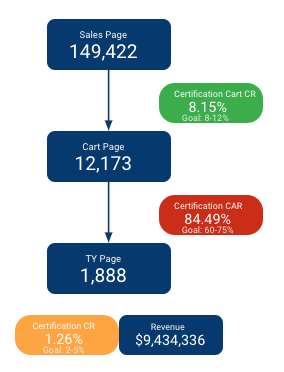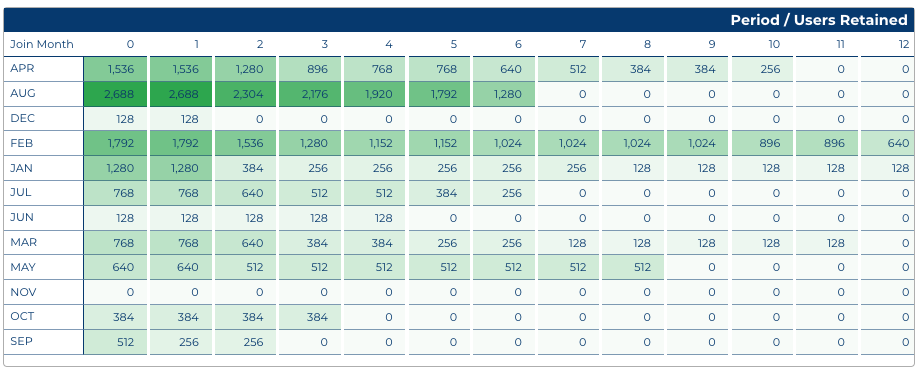One of the biggest challenges for marketing teams is dealing with the transparency on measuring the success of their campaigns (i.e., the metrics). The best way for you to address this is through a marketing audit, which includes a real-time marketing dashboard. An audit and dashboard will identify what’s working and what isn’t, and they can also help you scale up your business.
How to Do a Digital Marketing Audit
A digital marketing audit reviews and assesses all aspects of your online marketing. It includes a detailed review of your website, email marketing, and Google Analytics account. Your ad accounts, such as Google Ads, Facebook Ads, Pinterest Ads, etc., are also included because they are likely your main traffic sources.
To help you work with the future in mind, an ideal marketing audit should include a dashboard in Google Data Studio that allows you to track the major factors that drive success in your business, including funnel metrics, conversion rates, website engagement rates, sources of paid conversions, and more. Such a dashboard creates a snapshot of your current status compared to benchmark metrics and monitors your key metrics over time.
The goal of a marketing dashboard is to help you answer specific questions that drive important decisions such as revising webpage content, swapping out a lead magnet, or changing a landing page video. If these questions don’t deliver actionable insights, they shouldn’t be included in your marketing dashboard. The dashboard design should also allow you to view the information quickly so you can gain insights within seconds, not minutes or hours.
Examples of questions we answer in our business dashboards include the following:
- Marketing Attribution: What traffic source(s) are my sales coming from?
- Facebook and Google Ads Conversion Tracking: What campaigns are generating leads and/or sales?
- Website Behaviour Insights: Is my landing page copy engaging? Where are visitors dropping off?
- Video Marketing Audit: Are my video(s) engaging and converting visitors into leads/sales?
- Google Analytics Audit: Do I have Google Analytics set up properly to answer my questions?
- Measuring Content Marketing Success: Are my email automations and blog articles working?
- Retention, Churn, and Stick Rate Tracking: Once I attract customers, are they sticking around?
Marketing Attribution
It’s important to know where your leads and sales are coming from. You need to know what traffic you’re buying is turning into leads and sales so you can get the best return on investment possible. You can accomplish this by attributing leads and sales back to their original traffic sources so you know where each journey began.
Facebook and Google Ads Conversion Tracking
There are basic ways to set up conversion tracking on your ad platforms, but there are more advanced and more effective ways to ensure you’re getting an accurate reading of how many conversions are coming in. Most people copy and paste scripts into their website directly onto confirmation pages, which isn’t ideal. We recommend using tags in Google Tag Manager. These tags are triggered using more accurate methods when conversions are firing. Once conversions are tracking properly, you can display a snapshot of how your sales funnel is performing as illustrated here.

Website Behaviour Insights
Most businesses know what their website traffic is like and what pages are the most popular, but the insights tend to stop there. We recommend digging deeper into the user engagement story on your website so you can audit your content marketing more effectively. With Google Tag Manager, you can gauge new kinds of user behaviour, including the following:
- How much engagement, whether low, medium, or high (a combination of the time spent on your site and the amount of content scrolled through)
- Which vital page elements visitors view for longer than ten seconds
- How much of your video content visitors are watching
- Where users are dropping off the page
As an additional perk, you can also uplevel your remarketing ads based on website behaviours once you’re able to group your visitors by how engaged they are. For example, if you have an e-commerce website, you can remarket to people who have been on your site for more than two minutes and have scrolled more than 90% of your page(s). You can see how this would be more effective than marketing to everyone, including all the people who visited your site only to bounce ten seconds later.

Video Marketing Audit
When you embed videos into your website from Vimeo, Wistia, or YouTube, it’s important to get insights into how they perform. You can categorize their engagement using Google Tag Manager and get a better understanding of which videos are doing their job and which ones aren’t.
It’s also possible to build a report that categorizes your viewers into different engagement groups/buckets to track the performance of your videos. You can sort these groups by how much they viewed a particular video. You can even name the categories to make them more relatable. For example:
- Indifferent (didn’t watch the video)
- Intrigued (watched less than 50% of the video)
- Interested (watched more than 50% of the video)
- Fascinated (watched more than 50% of the video and scrolled down 80% or more of the page)
Having these insights into your video viewership will help you make informed decisions, whether it means keeping embedded videos that currently support your website copy or it means swapping them out with something new.
Google Analytics Audit
There are many moving parts in Google Analytics that businesses need to assess. We’ve created more than 130 data points to verify in this platform to ensure that businesses are set up for proper data analysis and output into reports. This refers back to the concept of “garbage in, garbage out.” Some common corrections that we see include the following:
- A need for referral exclusions such as PayPal or Infusionsoft: Excluding sales and payment system sites will get Google Analytics to stop reporting them as your customers’ referral sources.
- A lack of cross-domain tracking with your payment processing cart system such as ThriveCart: The Google Analytics user journey stops when the user leaves your domain, so it’s important to continue tracking their journey when they’re processing payment.
- A need to enable e-commerce connectors: Having these disabled means you can’t see the revenues coming from your marketing efforts.
- A need for UTM parameters for email marketing and online advertising: This allows you to see whether your email campaigns, organic posts, and ads are leading to conversions (leads and/or sales).
You can draw a wealth of information from Google Analytics once it’s set up effectively. Even though it sits behind the scenes, a proper Google Analytics setup is foundational in the creation of a strategic marketing dashboard.
Measuring Content Marketing Success
Writing and publishing blog articles can feel like you’re shouting into the void, but it doesn’t have to be like that. There are ways to track the articles that convert into leads, the articles that visitors fully read, and the articles that need more refinement due to low user engagement.
The first step is to use consistent UTM parameters for each email campaign, and the second step is to track engagement through Google Tag Manager. Both of these work together in a marketing dashboard, and you can display the information as a chart in Google Data Studio with these columns:
- Campaign name
- Clicks
- Purchases
Retention, Churn, and Stick Rate Tracking
It’s one thing to have a handle on where your new customers are coming from, but it’s another thing entirely if you’re losing most of them shortly after they become customers. A marketing dashboard can also report on customer retention so you can keep track of what happens after the sale.
It’s important to tell the entire story of the user journey in the dashboard rather than just the marketing and sales story. Businesses often drop the ball after the onboarding process is complete. Don’t forget to engage with your existing customers.

Why Businesses Get Digital Marketing Audits
There will be times when your business is going great, and there will be times when your business hits an air pocket with no clear reason. In either case, if you do the foundational work of running a digital marketing audit, you will educate yourself on what’s working and what’s broken.
An audit that provides an interactive and automated dashboard instead of just a momentary snapshot will help you and your business continually move forward and gain momentum. Having crucial internal benchmarks to keep an eye on provides the clarity you need to generate sustainable data-driven marketing results instead of just hopes and prayers that your campaigns will work out for you.
We can help your business with a digital marketing audit and a real-time dashboard. We’ll take all of your data points and merge them together into a storyline that reveals what your marketing is delivering. Contact us today for a free demonstration of our marketing dashboards.


